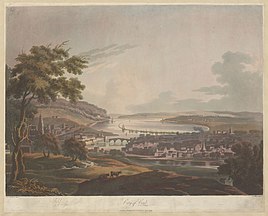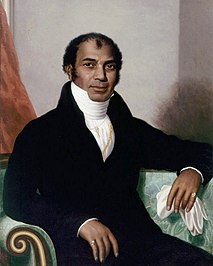
Diwali is the Hindu festival of lights with its variations also celebrated in other Indian religions. It symbolises the spiritual "victory of light over darkness, good over evil, and knowledge over ignorance". Diwali is celebrated during the Hindu lunisolar months of Ashvin and Kartika—between around mid-September and mid-November. The celebrations generally last five or six days.
The terms multiracial people or mixed-race people are used to refer to people who are of more than one race and the terms multi-ethnic people or ethnically-mixed people are used to refer to people who are of more than one ethnicity. A variety of terms have been used both historically and presently for mixed race people in a variety of contexts, including multiethnic, polyethnic, occasionally bi-ethnic, Métis, Muwallad, Colored, Dougla, half-caste, ʻafakasi, mestizo, mutt, Melungeon, quadroon, octoroon, sambo/zambo, Eurasian, hapa, hāfu, Garifuna, pardo, and Gurans. A number of these terms are now considered offensive, in addition to those that were initially coined for pejorative use. "Melezi" are called the offspring of Muslim Romani men and woman of host populations.

Anglo-Indian people fall into three different groups: people with mixed Indian and British ancestry, people of Indian descent born or living in the United Kingdom, and people of British descent born or living in India. The latter sense is now mostly historical. People fitting the middle definition are more usually known as British Asian or British Indian. This article focuses primarily on the modern definition, a distinct minority community of mixed Eurasian ancestry, whose first language is English.

A lascar was a sailor or militiaman from the Indian subcontinent, Southeast Asia, the Arab world, British Somaliland or other lands east of the Cape of Good Hope who was employed on European ships from the 16th century until the mid-20th century.
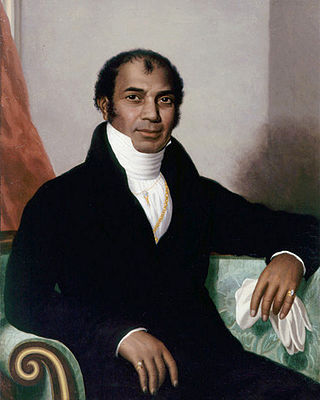
Dean Mahomed (1759–1851) was a British Indian traveller, soldier, surgeon, entrepreneur, and one of the most notable early non-European immigrants to the Western World. Due to non-standard transliteration, his name is spelled in various ways. His high social status meant that he later adopted the honorific "Sake" meaning "venerable one". Mahomed introduced Indian cuisine and shampoo baths to Europe, where he offered therapeutic massage. He was also the first Indian to publish a book in English.

British Asians are British citizens of Asian descent. They constitute a significant and growing minority of the people living in the United Kingdom, with 6.9% of the population identifying as Asian/Asian British in the 2011 United Kingdom census. This represented a national demographic increase from a 4.4% share of UK population in 2001.
The word shampoo in English is derived from Hindi chāmpo, and dates to 1762. The Hindi word referred to head massage, usually with some form of hair oil. Similar words also occur in other North Indian languages.
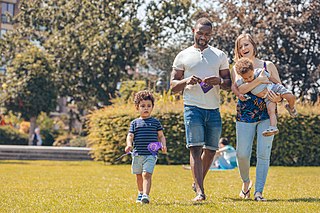
Interracial marriage is a marriage involving spouses who belong to different races or racialized ethnicities.
The historical immigration to Great Britain concerns the movement of people, cultural and ethnic groups to the British Isles before Irish independence in 1922. Immigration after Irish independence is dealt with by the article Immigration to the United Kingdom since Irish independence.

Indian New Zealanders are persons of Indian origin or descent, living in New Zealand. The term includes Indians born in New Zealand, as well as immigrants from India, Fiji, as well as other regions of Asia, parts of Africa such as South Africa as well as East Africa, and furthermore, from other parts of the world. The term Indian New Zealander applies to any New Zealanders with one or both parents of Indian heritage. Although sometimes the Indo-Kiwi definition has been expanded to people with mixed racial parentage with one Indian parent or grandparent, this can be controversial as it generally tends to remove the ethnic heritage or identity of the foreign parent or grandparent which may be termed as insensitive to those with mixed parentage, who tend to value both their Indian and non-Indian parents and grandparents.

British Indians are citizens of the United Kingdom (UK) whose ancestral roots are from India. This includes people born in the UK who are of Indian origin as well as Indians who have migrated to the UK. Currently, the British Indian population exceeds 1.8 million people in the UK, making them the single largest visible ethnic minority population in the country. They make up the largest subgroup of British Asians and are one of the largest Indian communities in the Indian diaspora, mainly due to the Indian–British relations. The British Indian community is the sixth largest in the Indian diaspora, behind the Indian communities in the United States, Saudi Arabia, the United Arab Emirates, Malaysia and Nepal. The majority of British Indians are of Punjabi, Gujarati, Bengali and Malayali descent, with smaller Tamil, Telugu, Konkani, and Marathi communities.
The number of Romani people in Ireland is roughly estimated, as the Central Statistics Office collects its data based on nationality and not ethnic origin. For this reason a precise demographic profile of the Romani in Ireland is not available. Some estimates of Romani in Ireland give the population at 1,700 in 2004, rising to between 2,500 and 3,000 in 2005. The majority derived from Romani populations originating in Ukraine and Hungary.
Afghan cameleers in Australia, also known as "Afghans" or "Ghans", were camel drivers who worked in Outback Australia from the 1860s to the 1930s. Small groups of cameleers were shipped in and out of Australia at three-year intervals, to service the Australian inland pastoral industry by carting goods and transporting wool bales by camel trains. They were commonly referred to as "Afghans", even though the majority of them originated from the far western parts of British India, primarily the NWFP and Balochistan, which was inhabited by ethnic Pashtuns and Balochs. Nonetheless, many were from Afghanistan itself as well. In addition, there were also some with origins in Egypt and Turkey. The majority of cameleers, including cameleers from British India, were Muslim, while a sizeable minority were Sikhs from the Punjab region. They set up camel-breeding stations and rest-house outposts, known as caravanserai, throughout inland Australia, creating a permanent link between the coastal cities and the remote cattle and sheep grazing stations until about the 1930s, when they were largely replaced by the automobile. They included members of the Pashtun, Baloch, and Sindhi ethnic groups from south-central Asia ; others from the Punjabi, Kashmir, and Rajasthan regions of the Indian subcontinent; as well as people from Egypt, Iraq, Syria, and Turkey. They provided vital support to exploration, communications and settlement in the arid interior of the country where the climate was too harsh for horses. They also played a major role in establishing Islam in Australia, building the country's first mosque at Marree in South Australia in 1861, the Central Adelaide Mosque, and several mosques in Western Australia.
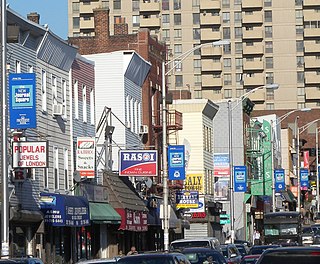
Indian Americans are citizens of the United States with ancestry from India. The term Asian Indian is used to avoid confusion with Native Americans in the United States, who are also referred to as "Indians" or "American Indians." With a population of more than 4.4 million, Indian Americans make up approximately 1.35% of the U.S. population and are the largest group of South Asian Americans, the largest Asian-alone group, and the largest group of Asian Americans after Chinese Americans. Indian Americans are the highest-earning ethnic group in the United States.
Bangladeshis are one of the largest immigrant communities in the United Kingdom. Significant numbers of ethnic Bengali peoples, particularly from Sylhet, arrived as early as the seventeenth century, mostly as lascar seamen working on ships. Following the founding of Bangladesh in 1971, a large immigration to Britain took place during the 1970s, leading to the establishment of a British Bangladeshi community. Bangladeshis were encouraged to move to Britain during that decade because of changes in immigration laws, natural disasters such as the Bhola cyclone, the Bangladesh Liberation War against Pakistan, and the desire to escape poverty, and the perception of a better living led Sylheti men bringing their families. During the 1970s and 1980s, they experienced institutionalised racism and racial attacks by organised far-right groups such as the National Front and the British National Party.

Overseas Indians, officially Non-Resident Indians (NRIs) and People of Indian Origin (PIOs) are Indians who reside or originate outside of India. According to the Government of India, Non-Resident Indians are citizens of India who currently are not living in India, while the term People of Indian Origin refers to people of Indian birth or ancestry who are citizens of countries other than India. Overseas Citizenship of India (OCI) is given to People of Indian Origin and to persons who are not People of Indian Origin but married to People of Indian Origin. Persons with OCI status are known as Overseas Citizens of India (OCIs). The OCI status is a permanent visa for visiting India with a foreign passport.
South Asians in the United Kingdom have been present in the country since the 17th century, with significant migration occurring in the mid-20th century. They originate primarily from eight sovereign states in South Asia which are, in alphabetical order, the countries of Afghanistan, Bangladesh, Bhutan, India, Nepal, Pakistan, and Sri Lanka. There is also a history of migration of diasporic South Asians from Africa and Southeast Asia moving to, and settling in, the United Kingdom.
Luso-Asians are Eurasian people whose ethnicity is partially or wholly Portuguese and ancestrally are based in or hail primarily from Portugal, South Asia, Southeast Asia, and East Asia. They historically came under the cultural and multi-ethnic sway of the Portuguese Empire in the East and retain certain aspects of the Portuguese language, Roman Catholic faith, and Latin cultural practices, including internal and external architecture, art, and cuisine that reflect this contact. The term Luso comes from the Roman empire's province of Lusitania, which roughly corresponds to modern Portugal.

Indians in the New York City metropolitan area constitute one of the largest and fastest-growing ethnicities in the New York City metropolitan area of the United States. The New York City region is home to the largest and most prominent Indian American population among metropolitan areas by a significant margin, enumerating 711,174 uniracial individuals based on the 2013–2017 U.S. Census American Community Survey estimates. The Asian Indian population also represents the second-largest metropolitan Asian national diaspora both outside of Asia and within the New York City metropolitan area, following the also rapidly growing and hemisphere-leading population of the estimated 893,697 uniracial Chinese in the New York City metropolitan area in 2017. The U.S. state of New Jersey, most of whose population is situated within the New York City metropolitan region, has by a significant margin the highest proportional Indian population concentration of any U.S. state, with a Census-estimated 4.6% of New Jersey's population being an individual of Indian origin in 2023.
Michael Herbert Fisher is emeritus Robert S. Danforth Professor of History at Oberlin College. He has published extensively about the interplay between Europeans and South Asians in South Asia and Europe. His three most widely held books are: The Travels of Dean Mahomet: An Eighteenth Century Journey through India, Migration: A World History, and A Short History of the Mughal Empire.
